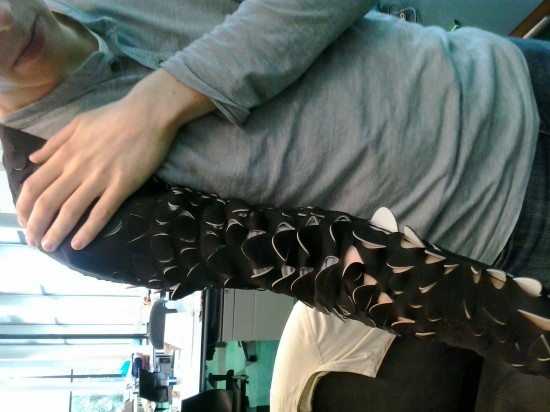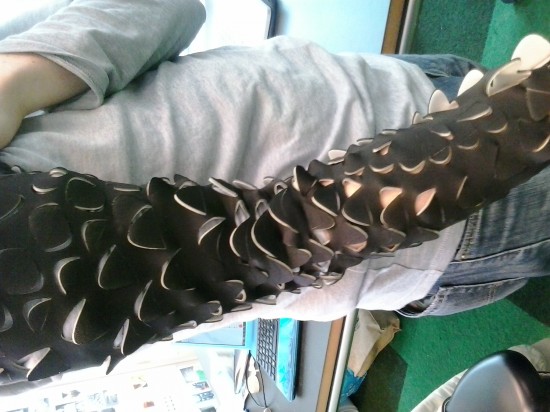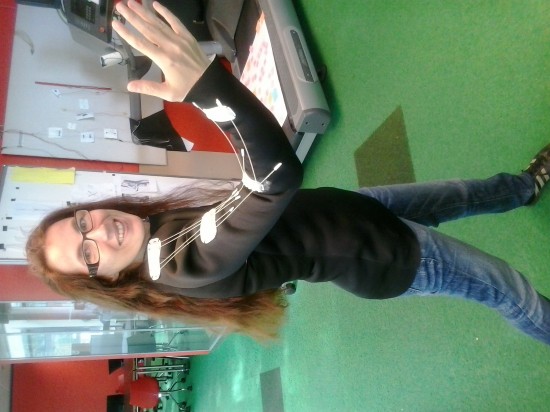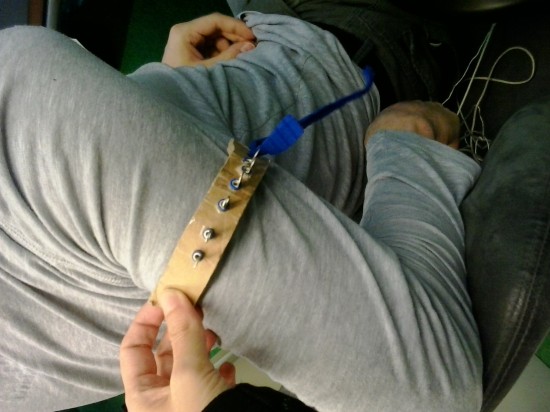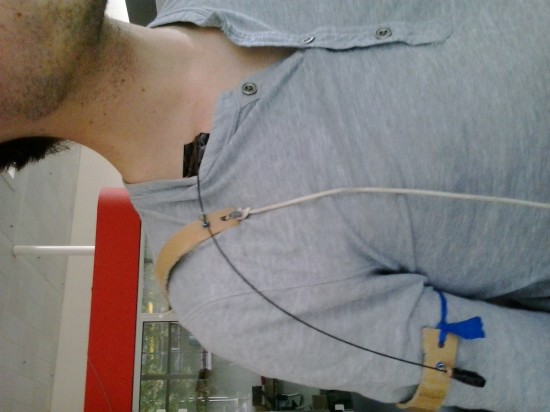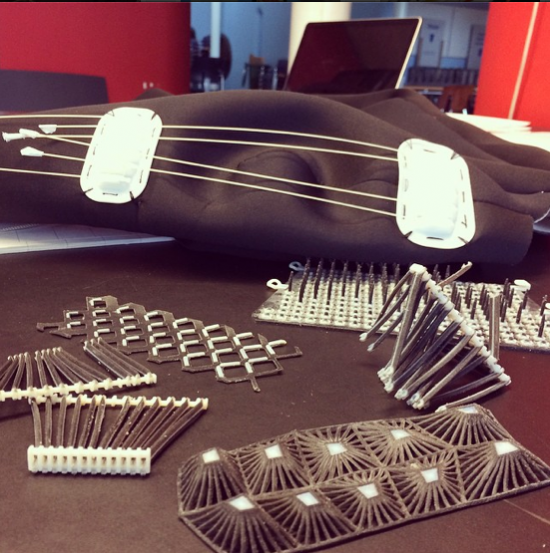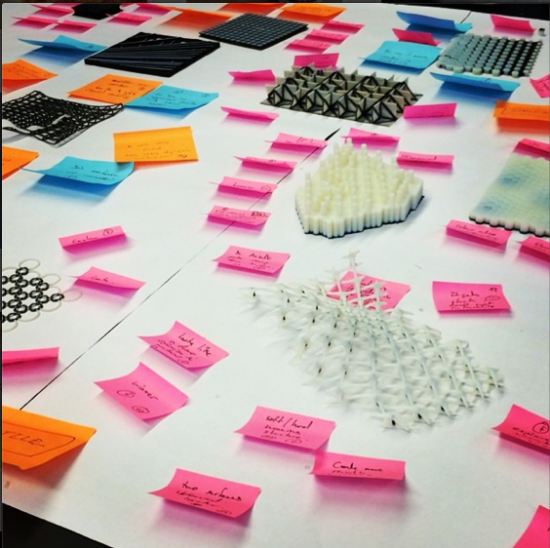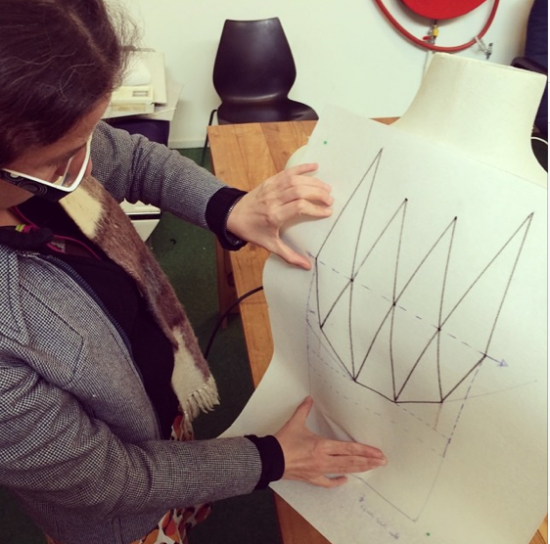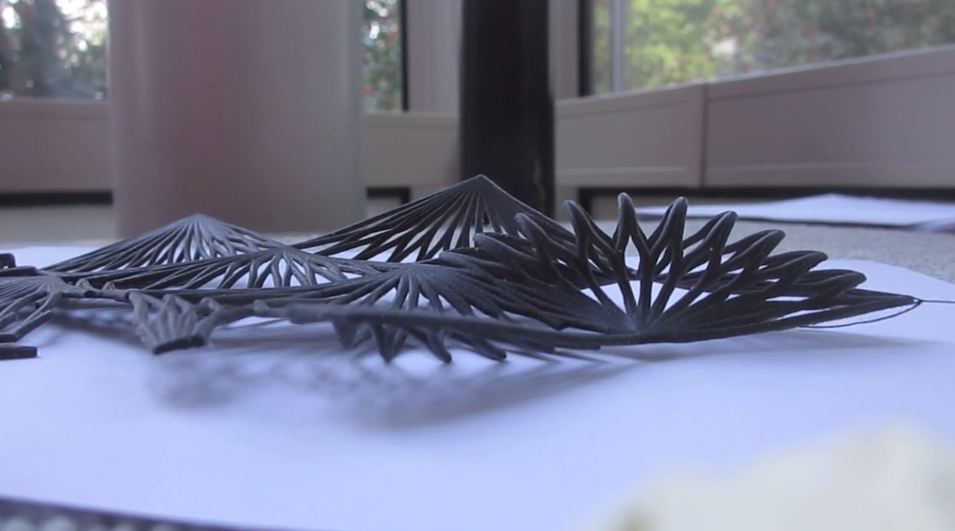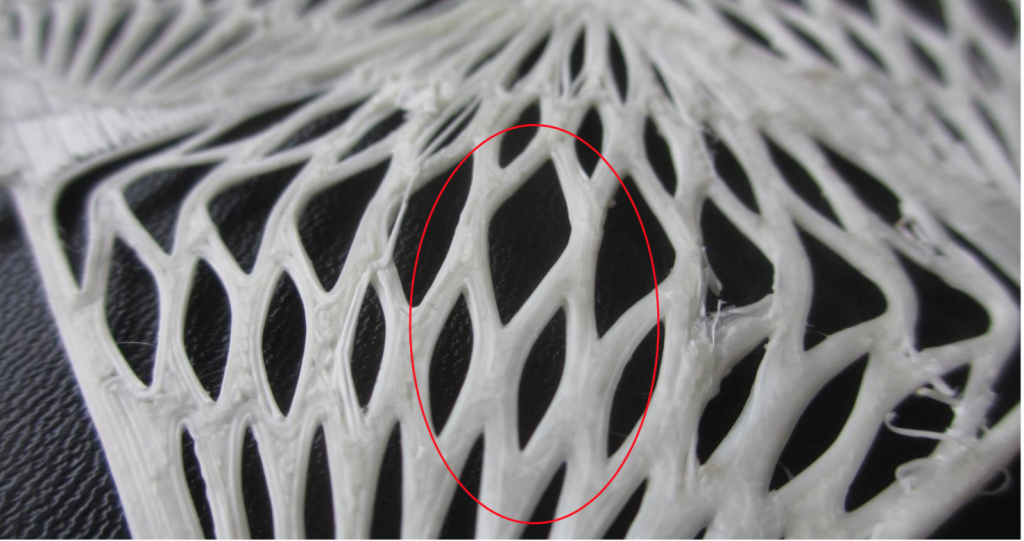The Dragon is Alive: Body informed 3D printed textiles Tu/e university Eindhoven
“The dragon is alive” is a reactive body informed 3D printed wearable made by Paola Tognazzi at the wearable senses department of Tu/e University in 2014.
Body informed 3D printing for fashion: khaleesi the little dragon is alive by Paola Tognazzi from paola tognazzi on Vimeo.
I was hired by the department of Wearable senses – University of Eindhoven, as expert physical interaction designer, specialized in movement mapping, to develop a research about Body informed 3D printing.
The research focused on the application of 3D printing technology to make a wearable garment able to shapeshift interactively to the wearer’s movements.
Research aim:
The research aims to solve the problem of electronics weight tearing textiles a part by making the body itself the engine of the material transformation.The results will be integrated by the dutch fashion designer Pauline van Dongen.
Research methodology:
For the project I used a Research Through Design (RTD) Methodology and worked on 2 fronts parallely:
1: Designing the adaptative patterns.
2: Developing a system that connects the dynamics of the body to the textile so that the wearer movements actuates the textile transformations.
Tools used:
• Processing: To code a Transformative Pattern simulation app
• Wearable_dynamics interactive system: To connect the digital pattern to ipods controllers, which allow to study how wearer physical movement could control the pattern transformations.
• Grasshopper to translate the final pattern design into a 3D file
• Multi material 3D printer to print the pattern in rubber material
• Umbrella parts and cartoon: To craft a connective mechanism
Development process:
1: Proprioceptive methodologies were used to map the body movements and design a mechanical system that puts in communication the impulses of physical movement to the textile structure. By developing a system that connects the dynamics of the body to the textile pattern, we create a mechanical system that allows wearer physical movement to change the directions, thickness, volume and spacing of the pattern.
2: Coding Pattern mechanics design simulators. In Processing I developed the code for simulating patterns designs, reactions to different push and pull forces. The pattern transforms according to the push and pull direction forces applied.
3: The code was then connected to Wearable_SuperNow, an interactive system that allows to test the pattern design shapeshifting performance qualities.
Once obtained the final design, Grasshopper was used to translate the pattern into a 3D file. Finally we 3D printed the patterns in rubber material, sew them with the embedded connecting system into a shirt.
Results
The result was a wearable system that accommodates physical movement and allows the movements of the arm to activate and control the 3D structure transformations. This produced a textile embedded with multiple behaviors and functionalities, which can change according to the information sent by the arm movements. Thanks to this design wearer can participate to the design of the shape through their own personal dynamics data.
Technique to embed reversible movement in 3D printed materials
With The Dragon is alive I developed a technique to embed reversible movement in 3D printed materials and to make them shapeshift changing directions, thickness and volume.
With this technique is possible to create material structures able to perform multiple behaviors according to the information sent by the actuators. These materials can have multiple functionalities.
THE DRAGON IS ALIVE/ in action
THE DRAGON IS ALIVE/ pattern 2
It’s being a great experience.
Big thanks to: Dr. Oscar Tomico, Martijn ten Bhömer, Kristi Kuusk, Brandon Yeup Hur, Pauline Van Dongen and the assistance of Ralph Zoontjens.

